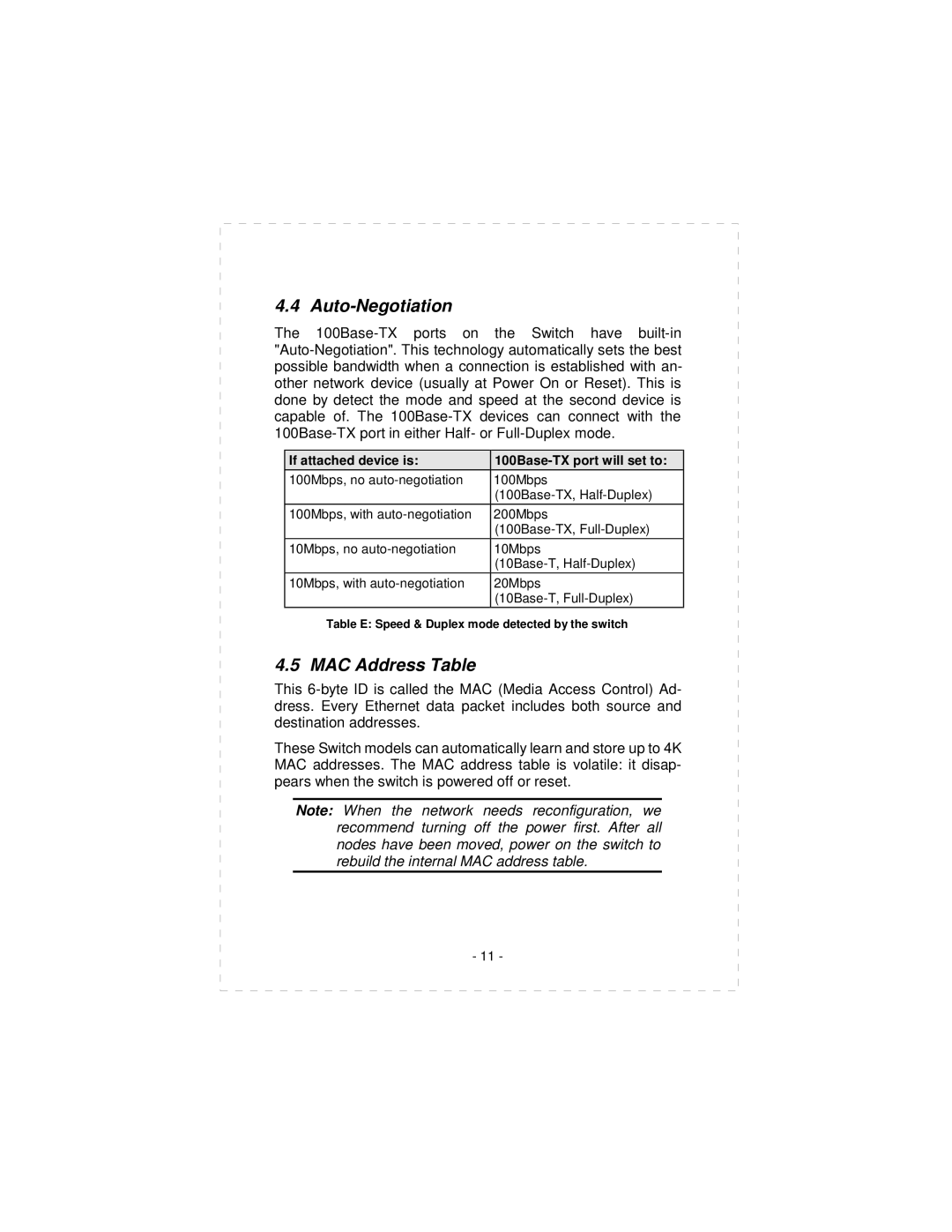4.4 Auto-Negotiation
The 100Base-TX ports on the Switch have built-in "Auto-Negotiation". This technology automatically sets the best possible bandwidth when a connection is established with an- other network device (usually at Power On or Reset). This is done by detect the mode and speed at the second device is capable of. The 100Base-TX devices can connect with the 100Base-TX port in either Half- or Full-Duplex mode.
If attached device is: | 100Base-TX port will set to: |
100Mbps, no auto-negotiation | 100Mbps |
| (100Base-TX, Half-Duplex) |
100Mbps, with auto-negotiation | 200Mbps |
| (100Base-TX, Full-Duplex) |
10Mbps, no auto-negotiation | 10Mbps |
| (10Base-T, Half-Duplex) |
10Mbps, with auto-negotiation | 20Mbps |
| (10Base-T, Full-Duplex) |
Table E: Speed & Duplex mode detected by the switch
4.5 MAC Address Table
This 6-byte ID is called the MAC (Media Access Control) Ad- dress. Every Ethernet data packet includes both source and destination addresses.
These Switch models can automatically learn and store up to 4K MAC addresses. The MAC address table is volatile: it disap- pears when the switch is powered off or reset.
Note: When the network needs reconfiguration, we recommend turning off the power first. After all nodes have been moved, power on the switch to rebuild the internal MAC address table.
- 11 -

